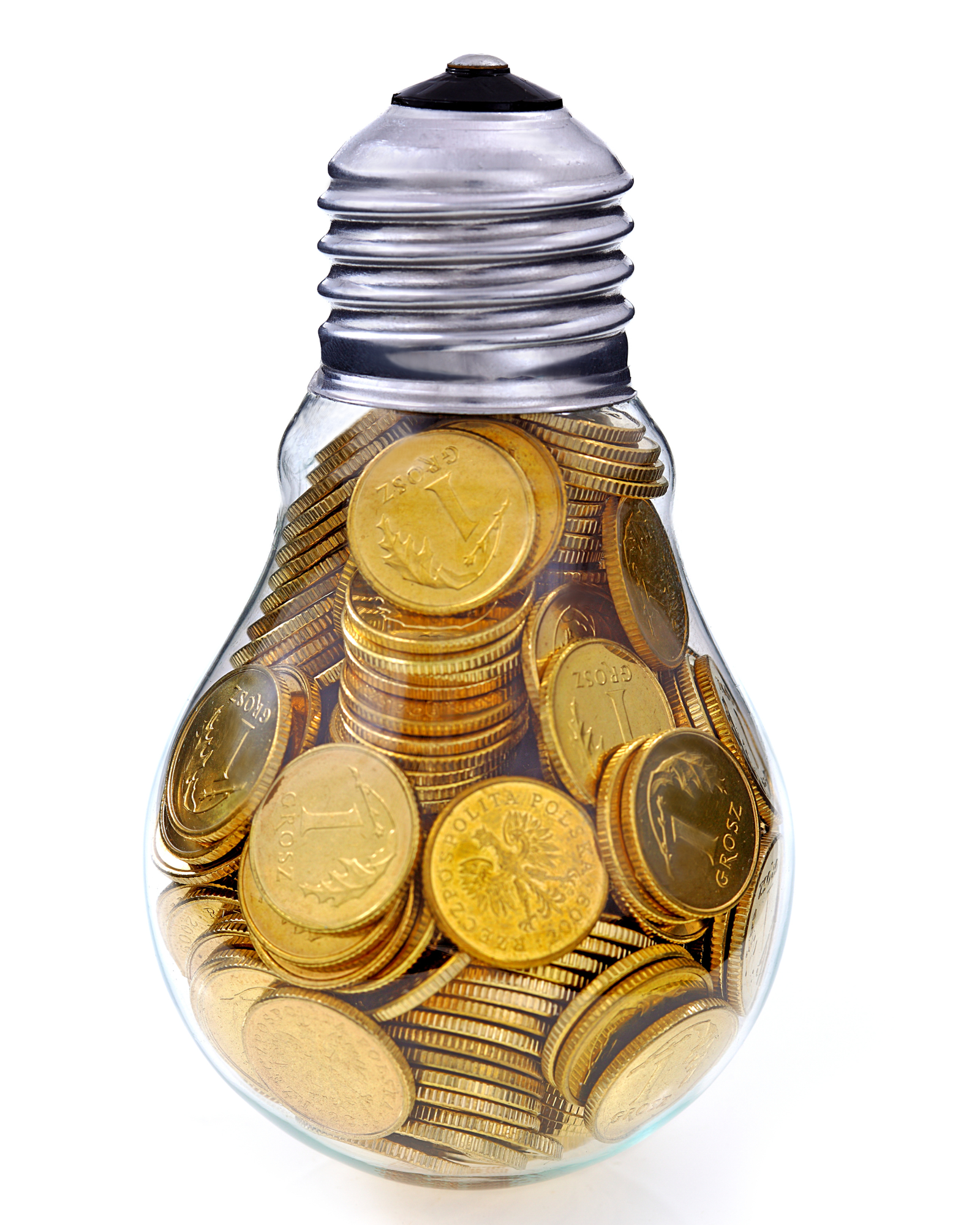In today’s world, conserving energy is more than just a trend—it’s a necessity. With rising energy costs and growing environmental concerns, people are constantly searching for ways to cut down on their energy consumption. In this article, we’ll explore some practical ways to conserve energy in your daily life, helping you save money and do your bit for the environment.
Why should we conserve energy?

Energy conservation is vital for the environment, economy, and health. The U.S. Environmental Protection Agency (EPA) states that residential and commercial buildings consume 39% of total energy, significantly contributing to greenhouse gas emissions. Reducing energy use combats climate change and decreases emissions. Energy-efficient measures like using LED bulbs can cut electricity bills by an average of 25%, according to the EPA. Less reliance on fossil fuels enhances air quality, lowering respiratory and cardiovascular diseases. Economically, energy conservation boosts energy security, reduces vulnerability to price changes, and fosters job growth in the renewable sector. In essence, energy conservation benefits our planet, health, wallets, and economy.
25 Ways to Reduce Energy Consumption and Lower Utility Costs
1. Swap out incandescent lights with LED bulbs

Swapping out incandescent lights for energy-efficient LED bulbs can greatly reduce energy consumption. LEDs use up to 80% less energy than incandescent bulbs, lowering electricity bills and decreasing greenhouse gas emissions. They also last 25 times longer, saving money on replacements and lessening environmental waste. LED bulbs emit less heat, enhancing safety and reducing cooling costs. With various LED options available for different light fixtures, transitioning to LEDs offers both energy conservation and long-term cost savings. When paired with sustainable lighting fixtures, energy-efficient light bulbs create a well-lit ambiance that does not harm the environment.
2. Invest in intelligent power strips

Intelligent power strips help conserve energy by combating phantom loads—the energy used by devices when off but plugged in. Phantom loads can account for up to 10% of household electricity usage, as per the Department of Energy. Smart power strips detect devices in standby mode, cutting their power and eliminating manual unplugging. They often feature timed shut-offs for long-inactive devices like TVs or computers and may include remote switches for easy multi-device control. Using these power strips reduces electricity bills and enhances energy efficiency.
3. Install a smart, programmable thermostat

Installing a smart thermostat can significantly reduce energy use and cut utility costs. These devices auto-adjust temperatures based on your routine, ensuring optimal heating or cooling only when needed. Using one can save about 8% on heating and cooling expenses. Besides, many models remind you to change air filters for peak HVAC efficiency and detect system issues early on, preventing costly repairs. Thus, a smart thermostat offers enhanced temperature control, energy efficiency, and cost savings.
4. Opt for appliances with high energy ratings

Appliances are integral to our everyday life. Choosing energy-efficient appliances helps conserve energy and reduces monthly utility bills. Such appliances, identifiable by the Energy Star label, adhere to the EPA’s strict energy efficiency guidelines and can offer up to 30% energy savings compared to standard models. Notably, energy-efficient clothes washers use less water and power, while high-rated refrigerators have advanced insulation and compressors for reduced energy use. Investing in these appliances not only saves money but also minimizes greenhouse gas emissions. When upgrading, prioritize high energy ratings and the Energy Star label for optimal savings.
5. Upgrade to energy-efficient windows

Energy-efficient windows offer cost savings and environmental benefits by improving insulation and regulating indoor temperatures. The Department of Energy (DOE) states that heat gain and loss through windows contribute to 25 to 30 percent of most homes’ heating and cooling energy. For cold climates, low-e storm windows reflect heat indoors, minimizing heating needs. In warmer areas, they block external heat, reducing cooling costs. When purchasing, look for the Energy Star and National Fenestration Rating Council (NFRC) labels to ensure energy efficiency and performance. Complementing windows with shades, shutters, and awnings further boosts insulation. By opting for energy-efficient windows and insulation enhancements, you’ll cut heating and cooling costs and decrease your carbon footprint.
6. Boost your home’s insulation

Improving home insulation is vital for energy efficiency, providing warmth in winter and coolness in summer, reducing energy bills. Begin by sealing gaps around doors and windows with weather stripping to prevent drafts and maintain desired temperatures. Window treatments like curtains add another insulation layer. Seal foundation cracks with expanding foam or caulking to prevent air leaks. Properly insulating areas like attics, crawl space and basements further prevents heat loss and unnecessary energy waste. By sealing gaps, insulating key areas, and using weather stripping, you enhance energy efficiency and home comfort.
7. Opt for cold-water laundry cycles

Using cold-water laundry cycles conserves energy and cuts utility costs. Washing in cold water can save up to 40% on energy bills, with potential annual savings of around $115. Modern laundry detergents are designed for cold-water efficacy, eliminating the need for warmer cycles. Moreover, cold water maintains clothing quality, preventing fading and wear. Thus, cold-water washing promotes energy efficiency, cost savings, and clothing longevity, supporting an eco-friendly lifestyle.
8. Clean or Replace air filters regularly

Regularly cleaning or replacing air filters optimizes HVAC efficiency and conserves energy. Dirty filters make the HVAC system work harder, elevating energy waste. Experts advise updating filters every 1 to 3 months, which can result in up to 15% energy bill savings. Maintaining clean filters ensures smooth airflow, preventing system strain and prolonging its lifespan. Thus, routine filter care not only cuts energy costs but also promotes sustainability.
9. Choose the appropriate oven for cooking

Choosing the right oven enhances energy efficiency in cooking. For smaller households or infrequent cooking, a smaller oven or countertop appliance like a toaster oven uses less energy and heats faster. If you often reheat or toast, consider energy-efficient appliances like microwaves. By aligning oven size and type with your needs, you can save on energy bills and promote sustainability. Every energy-saving choice matters!
10. Maximize the use of daylight

Harnessing daylight in workspaces is both eco-friendly and beneficial for employee well-being. Positioning workstations near windows and pulling back the window shades or using lightweight blinds boosts natural light access, reducing electricity usage from artificial lighting. This can cut energy bills and decrease a company’s carbon footprint. Plus, natural light elevates serotonin levels, enhancing mood and productivity. So, using daylight smartly can drive both sustainability and a happier workplace!
11. Wear climate-appropriate attire

Dressing for the weather is an eco-friendly choice. In winter, wearing warm clothes like sweaters and thermal socks reduces heater reliance, cutting energy costs. In summer, lightweight fabrics like cotton help you stay cool, lessening the need for fans or air conditioners. This strategy not only conserves energy and lowers bills but also shrinks your carbon footprint. So, whether you’re layering up or dressing down, enjoy comfort while saving energy.
12. Switch off unused lights and gadgets

Turning off lights and unused gadgets is an easy way to save energy and cut utility costs. As highlighted by the U.S. Department of Energy, switching off a single 60-watt bulb for just four hours daily saves about $9 annually. Remember to power down electronics, as even standby mode consumes energy, which can account for 10% of your electric bill, per the Natural Resources Defense Council. Using smart power strips can automate this and protect devices from surges. Adopt these habits, reduce your carbon footprint, and make daily energy conservation second nature.
13. Use timers for decorative lighting

Utilizing timers for decorative lighting is a savvy way to save energy. There are three main timer types:
- Mechanical timers: These basic devices, using pins or pegs, are set to activate lights at designated times.
- Digital timers: Offering greater flexibility, they have specific timing options and sometimes include random settings for a “homey” feel when you’re out.
- Smart timers: These high-tech options can be controlled via apps or smart home setups, boasting features like voice control and tailored schedules.
The perks of timers? They conserve energy, trim down bills, and automate lighting control, enhancing ambiance without wasting electricity. Pick your preferred timer and embrace both beauty and energy efficiency.
14. Detect and disconnect energy-draining devices

Combat energy vampires and slash your electricity bill by identifying and unplugging devices that drain power even when not in use. Devices like power bricks, game consoles, wall chargers, and printers, often termed as standby power or phantom loads, can account for up to 10% of a household’s energy use, according to the U.S. Department of Energy.
Spot these culprits by checking for constant displays or if they’re warm when idle. An energy monitor can further pinpoint power-hungry devices. While unplugging each device is a solution, power strips make it convenient to disconnect multiple devices simultaneously. For automated control, consider timers or smart power strips.
Tackling these energy-draining devices not only aids the environment by cutting greenhouse gas emissions but also trims your energy expenses.
15. Minimize hot water consumption

To conserve energy, minimize hot water use, as heating water drives your total energy usage significantly. Shorter showers and choosing them over baths can save significant water and energy. Adjust your water heater to around 120°F for optimal conservation and safety. Insulate hot water pipes to retain heat, and lower the heater’s thermostat during vacations. Adopting these habits can lead to substantial energy savings, benefiting both your wallet and the planet.
16. Limit the use of air cooling systems

Limiting air conditioner use conserves energy and cuts electricity costs, especially during warm months. Using programmable thermostats can automate temperature adjustments to save energy when you’re away or sleeping. Incorporate natural shading from trees to decrease sun exposure, reducing cooling needs. Engaging in outdoor activities also reduces indoor cooling time. Adopt these strategies to promote energy conservation and foster an eco-friendly lifestyle.
17. Monitor refrigerator and freezer efficiency

Maintaining your refrigerator’s efficiency is pivotal for energy savings, as it accounts for roughly 14% of household energy use. To optimize performance, set fridges to 35-38°F and freezers to 0°F. Regular upkeep, like cleaning condenser coils and ensuring door seals are airtight, enhances efficiency and extends appliance life. Proper refrigerator maintenance not only conserves energy but also ensures food stays fresh while keeping electricity bills in check.
18. Air-dry clothes as an alternative to machine drying

Air-drying clothes is a sustainable choice that saves energy and preserves garment quality. Instead of machine drying, which consumes power and wears out clothing, air-drying involves hanging clothes outdoors on a line or indoors near open windows. If outdoor space is limited, a well-ventilated indoor area works just as well. For those still using dryers, wool dryer balls can enhance efficiency, cutting down drying time. This method not only conserves energy but also helps garments last longer, minimizing replacements. In essence, air-drying is both eco-friendly and garment-friendly, making it a win-win for your energy bills and wardrobe.
19. Operate appliances at full capacity

For max energy efficiency, always run appliances at full capacity. Here’s why and how:
- Dishwashers & Washing Machines: Only run with full loads. Partial loads consume equal energy, so wait and maximize each cycle.
- Ovens: Match oven size to meal size. Using a big oven for small dishes consumes more energy. For smaller meals, consider toaster ovens.
- Dryers: Like washers, wait for a full clothing load. Running partial loads isn’t energy-efficient.
By simply optimizing appliance use, you’ll see notable energy savings and lower utility bills. Small shifts make a big difference!
20. Opt for quick showers

Opting for quick showers not only saves on energy and water but also lowers your bills. Using a standard showerhead, you consume about 2.5 gallons per minute. Trim a few minutes, and you save significantly. In fact, for a family of four, cutting just one minute from showering can save up to 1,825 gallons annually. This also translates to less energy needed to heat the water, reducing your energy bills. So, by adopting shorter showers, you contribute to conservation and pocket savings, making it a sustainable choice for all.
21. Use Dishwashers

Dishwashers are both convenient and eco-friendly compared to handwashing, consuming less energy and water. To optimize these benefits, always run full loads and, if possible, use the eco-setting, which adjusts for efficiency with lower temperatures and shorter cycles. Skip the drying cycle, letting dishes air dry to save more energy. Modern dishwashers handle food particles well, so pre-washing isn’t necessary. Regularly clean the drain for peak efficiency. By employing these energy-smart practices, your dishwasher remains an eco-friendly asset in your home.
22. Use Solar Energy

Solar energy, harnessed via solar panels, offers homeowners a sustainable way to save on utilities, create their own source of renewable energy, and reduce reliance on traditional power sources. Many governments even offer incentives to make solar adoption more appealing. Environmentally, solar energy cuts down on greenhouse gas emissions; a typical home can reduce carbon emissions by 3 to 4 tons yearly. Pairing solar energy with energy-efficient appliances and LED bulbs maximizes savings and efficiency. Overall, solar power provides not only financial advantages but also promotes a greener, energy-conscious lifestyle.
23. Reduce Car Usage

Reducing car usage is pivotal for energy conservation and environmental protection, given that transportation, especially cars, consumes vast energy. Alternatives like walking, biking, carpooling, or public transit lessen our car dependence, offer health benefits and reduce emissions. Cities focusing on such alternatives report decreased pollution, improved public health, and better living standards. For example, cities enhancing biking routes experience less traffic and cleaner air. Embracing these alternatives not only safeguards our environment but also boosts our health and quality of life. Let’s drive less for a greener, healthier future.
24. Consider a smaller living space

Opting for a smaller living space is a savvy move to cut energy use and utility costs. Smaller homes naturally use less energy, slashing electricity bills. Beyond energy savings, they’re also easier to maintain and promote a minimalist lifestyle. Studies highlight that those who’ve downsized have seen significant energy reductions; for instance, a suburban study noted a 45% drop in utility bills among those in energy-efficient, smaller homes. Embracing a smaller home doesn’t just save money—it paves the way for a more sustainable and focused lifestyle. So, downsizing can be both an environmental and lifestyle win.
25. Reduce the number of gadgets

Trimming down the number of gadgets we own is a smart way to save energy and declutter our lives. Reports show that gadgets account for around 25% of U.S. household electricity use. Moreover, by 2030, we’re expected to have an average of 13 gadgets each globally. Instead of juggling multiple devices with similar functions, consider consolidating. For instance, a single device might replace the need for a tablet, laptop, and smartphone. Fewer gadgets mean less energy consumed, a tidier space, and a push towards sustainability. In essence, owning fewer gadgets is both an eco-friendly choice and a lifestyle enhancer.
Energy-efficient products for your home
When looking to conserve energy and decrease reliance on fossil fuels, homeowners have a range of energy-efficient products at their disposal. Solar panels, a widely favored choice, capture sunlight and transform it into electricity. Usually mounted on rooftops, these panels enable homeowners to lessen their dependence on conventional energy sources and cut down on electricity expenses.
Equally compelling are solar batteries, which are designed to store surplus energy produced by the solar panels. These batteries ensure that homeowners can tap into stored energy during periods without sunlight, thus optimizing energy utilization and further diminishing grid reliance.
Another notable product is the air-source heat pump. These systems harness the external air to either warm or cool the interiors, offering an efficient method for regulating home temperatures. By leveraging the surrounding air, these pumps considerably slash energy use when set against traditional HVAC systems.
By incorporating these energy-efficient tools, homeowners stand to benefit from diminished energy use and more economical utility bills. Beyond that, they play a pivotal role in fostering a more eco-friendly world by curbing greenhouse gas emissions linked to burning fossil fuels. Committing to solar panels, solar batteries, and air-source heat pumps not just results in financial savings but also champions a sustainable and more pristine future.
Frequently Asked Questions
1. What is the difference between Energy Conservation and Energy Efficiency?
Energy conservation and energy efficiency, though related, have unique focuses in the realm of sustainability. Conservation is about tweaking our habits, like turning off unused lights or optimizing natural lighting, to use less energy without sacrificing comfort. Efficiency, however, leans into technology, using devices like energy-saving bulbs or smart thermostats that perform tasks with less energy. In a nutshell, conservation is about mindful energy habits, while efficiency utilizes advanced tech for similar outcomes. Together, they’re our ticket to a greener, energy-smart future.
2. What consumes the most electricity in a home?
Heating and air conditioning dominate household energy consumption. To save energy, it’s key to use these systems judiciously and set them to optimal temperatures. Other energy culprits include kitchen appliances, lighting, entertainment devices, and laundry machines. It’s crucial to switch them off when not needed and use their energy-saving modes. By embracing energy-efficient habits and gadgets, we not only cut down on bills but also reduce our environmental impact. Adopting such mindful practices pushes us closer to a sustainable lifestyle.
3. What are the best ways to store energy?
Energy storage is pivotal for enhancing energy efficiency and leveraging renewables. Popular storage systems include batteries, ideal for holding power from sources like solar and wind. Pumped hydro storage, where water is pumped uphill and later released to generate electricity during peak times, is another method. Additionally, thermal energy storage captures excess heat, useful for heating spaces or water. Embracing these storage techniques boosts our efficiency, optimizes renewable use, and decreases reliance on traditional power, setting us on a path to a sustainable energy landscape.
4. What are the best ways to conserve energy in my daily life?
Small daily habits can greatly influence our energy conservation efforts. Choosing energy-efficient appliances like those with the Energy Star label can drastically cut energy use without compromising performance. Simple acts, such as turning off unused lights, maximizing natural daylight, tweaking thermostat settings, and opting for cold laundry washes, can also contribute to savings. By embracing these changes, we not only protect our environment but also save on our energy bills. Let’s champion energy conservation for a greener, cost-effective future!





